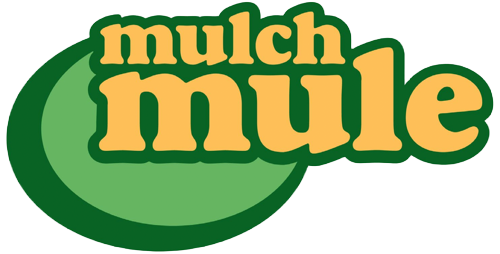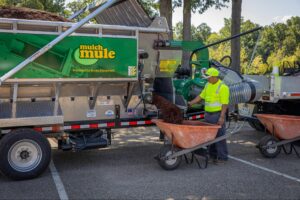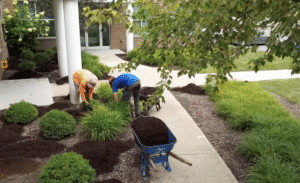Managing labor effectively is essential for landscaping companies facing multiple projects, shifting schedules, and dispersed teams. Poor time tracking leads to unexpected labor costs, project delays, and dissatisfaction among employees—issues that directly impact profitability and client satisfaction. To thrive, landscaping businesses must adopt modern, reliable time management practices that streamline operations and optimize productivity year-round.
This article outlines advanced time tracking strategies tailored for the landscaping industry. By implementing these approaches, you can gain valuable insights into daily operations, reduce wasted time, and ensure teams operate at peak efficiency—all while promoting safety and employee satisfaction.
Why Time Tracking is Crucial for Landscaping Success
Effective time tracking is the backbone of successful operations in landscaping. Without it, businesses face challenges like inaccurate billing, uneven crew productivity, and mismanaged project schedules. In an industry characterized by decentralized work sites, tracking hours and tasks is critical.
Time tracking helps managers understand time allocation for various tasks, enabling smarter resource allocation and better decision-making. It also reinforces safety protocols by ensuring employees take necessary breaks, which prevents overexertion and reduces the risk of injuries. In short, accurate records lead to realistic timelines, fair compensation, and improved operational efficiency.
The Core Benefits of Effective Time Tracking
Implementing effective time tracking offers numerous advantages that directly impact your bottom line, client satisfaction, and team morale.
Cut Labor Costs by Maximizing Productivity
Time tracking provides clear, real-time data on daily operations, allowing managers to allocate tasks efficiently, reduce idle time, and adjust workflows to keep projects moving smoothly. By analyzing performance metrics, you can implement data-driven scheduling and targeted training to ensure every crew member is utilized effectively. This process naturally exposes hidden delays—from excessive travel time to equipment downtime—allowing you to reallocate resources, streamline processes, and cut labor costs.
Strengthen Project Timelines with Real-Time Monitoring
Time tracking tools that offer immediate insights allow managers to monitor progress across multiple job sites simultaneously. This real-time visibility enables rapid adjustments to schedules and crew assignments, helping you avoid costly delays, build trust with clients, and maintain a strong reputation for on-time project delivery.
Improve Crew Accountability and Transparency
Detailed time records clarify who worked on specific tasks and for how long, promoting accountability among employees. This transparency builds trust within the team and with clients, as clear data supports fair billing and verifies project milestones. When everyone can see that tasks and hours are allocated responsibly, it fosters a positive and equitable team environment.
Enhance Employee Safety, Morale, and Satisfaction
Accurate time tracking is critical for a healthy and safe work environment. By monitoring work hours and enforcing scheduled breaks, you can prevent employee fatigue and reduce the risk of injuries. This focus on well-being, combined with fair scheduling and proper compensation for every hour worked, leads to higher morale, better retention, and a more dedicated workforce—all of which are invaluable in a physically demanding industry like landscaping.
Modern Tools and Technologies for Landscaping Time Tracking

The evolution of technology has transformed time tracking from manual systems to sophisticated digital solutions. Today’s tools offer mobility, automation, and real-time data essential for remote and dynamic work environments.
Time-Tracking Software and Mobile Apps
Modern time tracking software allows landscaping crews to log hours, breaks, and specific tasks directly from their smartphones or tablets. Many mobile time-tracking apps offer features like GPS verification, ensuring that data is accurate and reliable even in areas with limited connectivity. Features such as geolocation verification further bolster accuracy, while automated functions simplify the process, freeing teams to focus on project execution.
Integrating Time Tracking With Project Management
Combining time tracking with project management software creates a synchronized system for scheduling, budgeting, and task assignment. This unified approach minimizes discrepancies and supports consistent project execution by aligning labor data with overall project goals.
Wearables and IoT Devices
Innovations in wearables and IoT devices are reshaping workforce management. Wearable technology monitors employee activity, while IoT sensors on equipment provide complementary usage data. This integration not only boosts productivity but also enhances overall safety on the job.
AI and Predictive Analytics
Emerging AI-driven tools analyze historical and real-time data to forecast project timelines and determine labor needs. For example, predictive analytics can suggest timely adjustments when faced with recurring delays, enabling managers to make proactive, data-backed decisions.
Data-Driven Scheduling
Analyzing detailed metrics supports data-driven scheduling, ensuring that shifts in workloads and crew allocations are handled with precision—translating into better resource management and smoother project execution.
Strategies for Efficiently Managing Landscaping Crews
Accurate time tracking is only valuable when transformed into actionable management strategies. The following approaches can help optimize crew performance and streamline workflows:
Set Clear Goals and Define Roles
Clearly outline objectives and responsibilities at the start of each project. Define roles—whether for machinery operation, material handling, or specific landscape tasks—to minimize downtime and ensure smooth operations. Establish measurable milestones to maintain focus and accountability
Standardize Workflows
Implement standardized procedures for routine tasks such as material setup and equipment operation. Consistent workflows reduce variability and make it easier to identify inefficiencies. Training your crew on these standardized methods ensures that operations are consistent across projects.
Train and Familiarize Crews With Technology
For time tracking tools to be effective, every team member must know how to use them. Provide hands-on training that covers logging hours, tracking breaks, and understanding the benefits of accurate data collection. Incorporate this training early in the onboarding process to ensure seamless integration.
Enhance Real-Time Communication
Establish a clear framework for consistent communication using tools like instant messaging apps and regular team meetings. These open channels ensure that workers can report potential delays or challenges quickly, allowing managers to resolve issues, reassign tasks, or share important project updates without losing momentum. When the entire team understands both the larger objectives and their specific roles, collaboration becomes more natural, and mistrust about time tracking systems decreases. This environment of shared understanding promotes accountability and enthusiasm, motivating your workforce to stay invested in optimizing performance.
Use Time Tracking Insights for Continuous Improvement
Regularly review time tracking reports to identify trends and productivity bottlenecks. Use these insights to refine scheduling practices and adjust resource allocation, ensuring that your operations evolve and continuously improve.
Avoiding Common Pitfalls in Time Tracking Implementation
While modern tools offer significant benefits, a successful rollout requires avoiding common mistakes. Steering clear of these pitfalls will ensure your time tracking system becomes a valued asset rather than a frustrating chore for your team.
Pitfall 1: Neglecting Employee Training
A frequent error is over-relying on technology without adequately preparing your team. Investing in an advanced system is only worthwhile if every crew member is comfortable and confident using it.
- The Risk: Inadequate onboarding leads to inaccurate data, misreported hours, and underutilized features, defeating the purpose of the system.
- The Solution: Schedule hands-on training sessions and provide easy-to-access support materials. Ensure every employee understands not just how to use the tool, but why it benefits them and the company.
Pitfall 2: Using a One-Size-Fits-All Approach
Failing to customize your software to the unique needs of a landscaping business is another common misstep. Off-the-shelf solutions rarely capture the nuances of your daily operations.
- The Risk: A generic setup won’t properly track crucial details like travel time, equipment usage, or specific job codes for different services (e.g., mowing vs. installation).
- The Solution: Work with your software vendor to tailor the settings. Create custom fields and job codes that mirror your real-world workflows, ensuring the data you collect is relevant and actionable.
Pitfall 3: Collecting Data Without Analyzing It
Simply collecting data without regularly reviewing it renders the entire process ineffective. The value of time tracking comes from the insights it provides.
- The Risk: Hidden inefficiencies, productivity bottlenecks, and opportunities for improvement will go unnoticed.
- The Solution: Schedule regular meetings to review time tracking reports. Use this data to have constructive conversations with your team and foster a culture of continuous improvement.
Pitfall 4: Creating a Rigid, Inflexible System
Landscaping is unpredictable. A time tracking system that doesn’t account for this will be a source of constant frustration.
- The Risk: A rigid system can’t adapt to real-world events like severe weather, unexpected equipment maintenance, or last-minute client requests.
- The Solution: Build flexibility into your process. Ensure your system allows for easy manual adjustments and notes, so your team can accurately log time even when the day doesn’t go according to plan.
The Overlooked Factor: Pairing Time Tracking with the Right Equipment

Leveraging the right equipment is critical to complementing time tracking systems. Specialized machinery can drastically reduce manual labor and improve efficiency on job sites.
Automating Material Handling
Manual handling of materials like mulch, soil, and debris can be slow and physically taxing. Adopting material handling automation streamlines loading, unloading, and distribution, accelerating project timelines and reducing labor intensity. In addition, machinery equipped with automated discharge systems can complete tasks in seconds, minimizing bottlenecks and labor hours.
Versatile Year-Round Solutions
Equipment that functions across various seasonal tasks—from spring planting to fall cleanup—provides consistent value throughout the year. Multipurpose tools allow crews to shift seamlessly between projects without needing additional resources, optimizing operational flexibility and return on investment.
Enhancing Safety With Ergonomic Designs
Ergonomic designs play a crucial role in protecting employees from strain and injury. Tools built with operator safety in mind not only boost productivity but also help maintain high morale.
Mulch Mule’s Equipment as an Example
Innovative solutions like Mulch Mule trailers showcase how specialized equipment can improve efficiency. With advanced discharge systems that speed up bulk material handling, these trailers reduce labor costs and empower crews to focus on high-value tasks.
Future-Proofing Your Business with Modern Solutions
As the landscaping industry evolves, future time tracking solutions will focus on further integration and enhanced predictive capabilities. AI-powered tools will offer smarter crew assignments and route planning, while robotics and automated equipment continuously provide real-time performance data. Fully integrated systems that combine time tracking with project management and billing will deliver instant insights into labor costs and project status, helping businesses adapt quickly to changing conditions. Scalable, data-driven platforms will allow companies to refine their operations and maintain a competitive edge in a dynamic market.
Frequently Asked Questions
What features should landscaping companies look for in time tracking software?
Look for mobile-friendliness, GPS/location tracking, project/job code functionality, offline mode, integration with payroll/project management systems, and ease of use for field staff.
How does time tracking help with accurate job costing?
By logging hours spent on each project and task, you get precise data for labor costs, making bids more accurate and ensuring profitable pricing.
What are common challenges in getting crews to adopt time tracking tools?
The biggest barriers are unfamiliarity with technology, perceived extra work, and privacy concerns. Overcome these by clear communication, training, and choosing user-friendly tools.
Can time tracking improve employee safety and satisfaction?
Absolutely. It ensures fair scheduling, prevents overwork, and makes sure breaks are taken—improving morale and reducing injuries.
How much does landscaping time tracking software cost?
Pricing varies, but most solutions charge per user per month. Expect to pay between $5–$15 per user monthly, with discounts for larger teams.
Elevate Your Landscaping Business with Effective Tracking Strategies
Time tracking is a powerful tool that can transform how landscaping businesses manage operations. By adopting modern tools, refining crew management strategies, and leveraging efficient equipment, you can enhance productivity, reduce labor costs, and maintain high safety standards. Effective time management not only improves profitability but also fosters a positive work environment.
Ready to take your landscaping business to the next level? Mulch Mule understands the challenges of managing labor-intensive operations. Our innovative equipment is designed to complement your time-tracking efforts by streamlining processes, reducing manual labor, and helping you meet deadlines with ease. Contact Mulch Mule today to learn how our cutting-edge tools can boost your efficiency and support your crew.



